If you love giant boulders, unique landscapes, and a little bit of history, then Elephant Rocks State Park needs to be on your Missouri bucket list! This place is seriously cool—massive, billion-year-old granite boulders stacked like a parade of elephants, just waiting to be climbed and explored. Whether you’re here for the hiking, the history, or just some epic photo ops, it’s a spot that doesn’t disappoint.
We visited Elephant Rocks as part of a day trip from Echo Bluff State Park, packing in a full day of adventure that also included Taum Sauk Mountain, Johnson’s Shut-Ins, and Missouri Mines State Historic Site. It was the perfect mix of hiking, scenic views, and a little bit of history. In this guide, we’ll share everything you need to know about visiting Elephant Rocks—what to do, the best places for photos, and some tips to make the most of your trip. Plus, we’ll give you a glimpse into our experience and why we think this park is such a fun stop in the Missouri Ozarks!
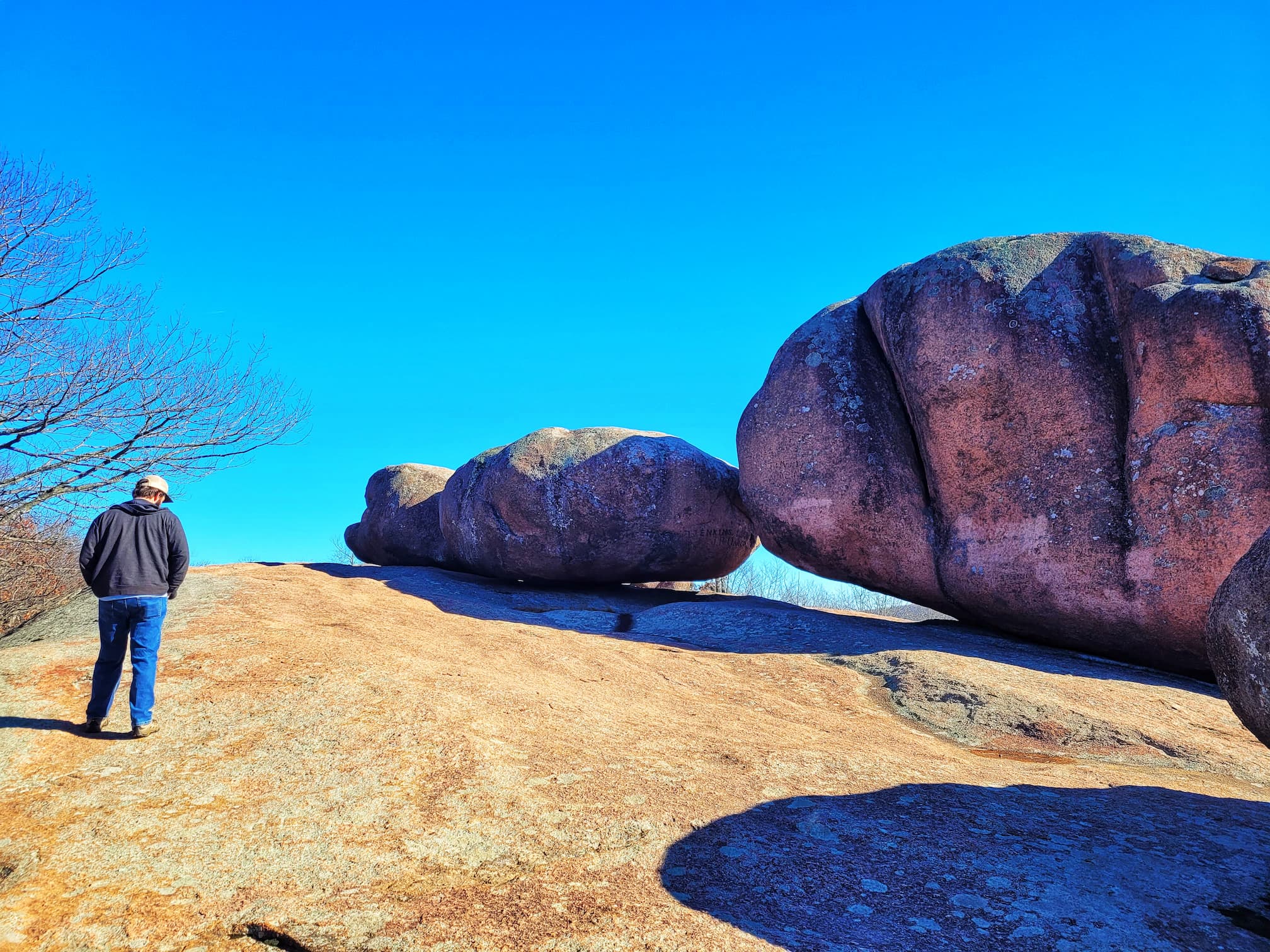
About Elephant Rocks State Park
7390, 7406 MO-21, Belleview, MO 63623
https://mostateparks.com/park/elephant-rocks-state-park
Elephant Rocks State Park may be small at just 7.5 acres, but it packs a big punch when it comes to scenery, geology, and history. The park gets its name from the massive, 1.5-billion-year-old granite boulders that stand in a row, resembling a train of circus elephants. These giant rocks, including the biggest—nicknamed “Dumbo”—which measures 27 feet tall, 34 feet long, and 17 feet wide, were formed deep underground during the Precambrian era. Over time, erosion wore away the surrounding rock, exposing these rounded, weathered formations known as tors, making this one of the best examples of this geological feature in the Midwest.
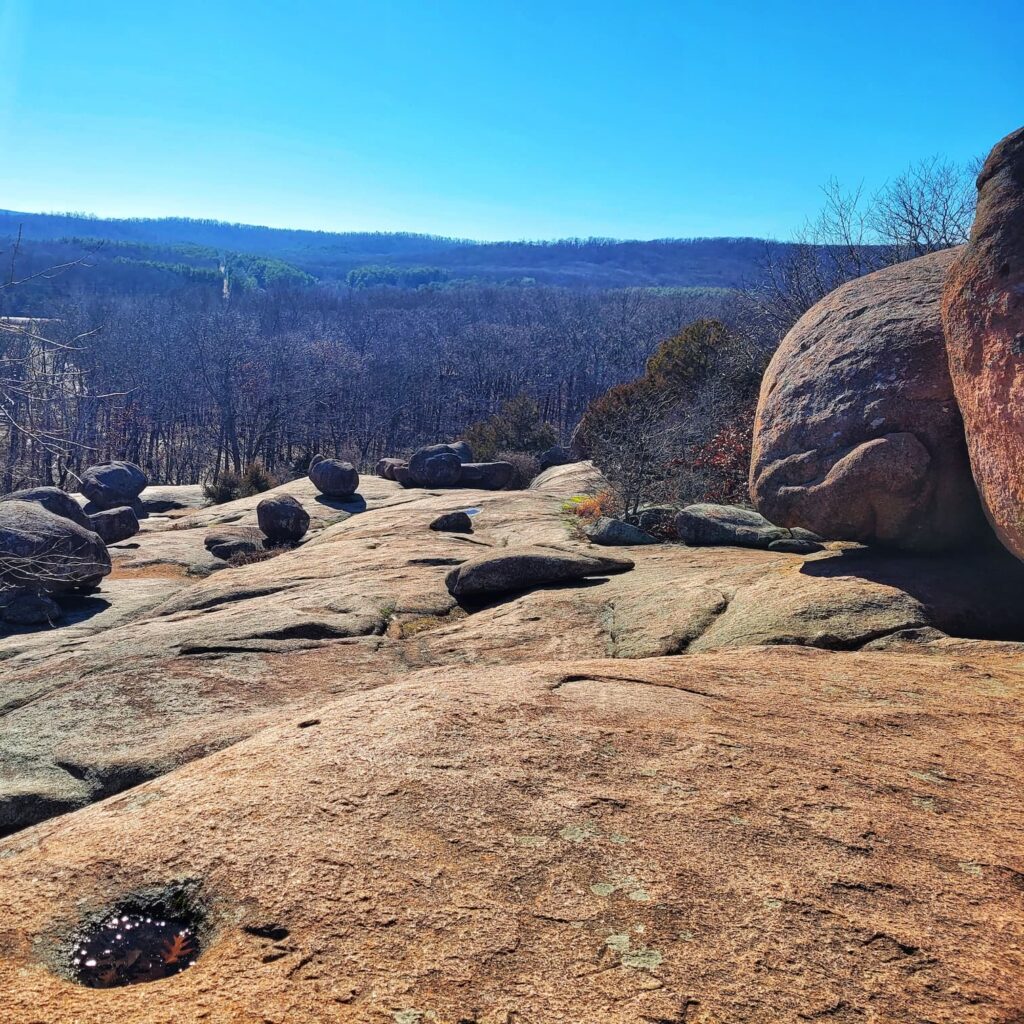
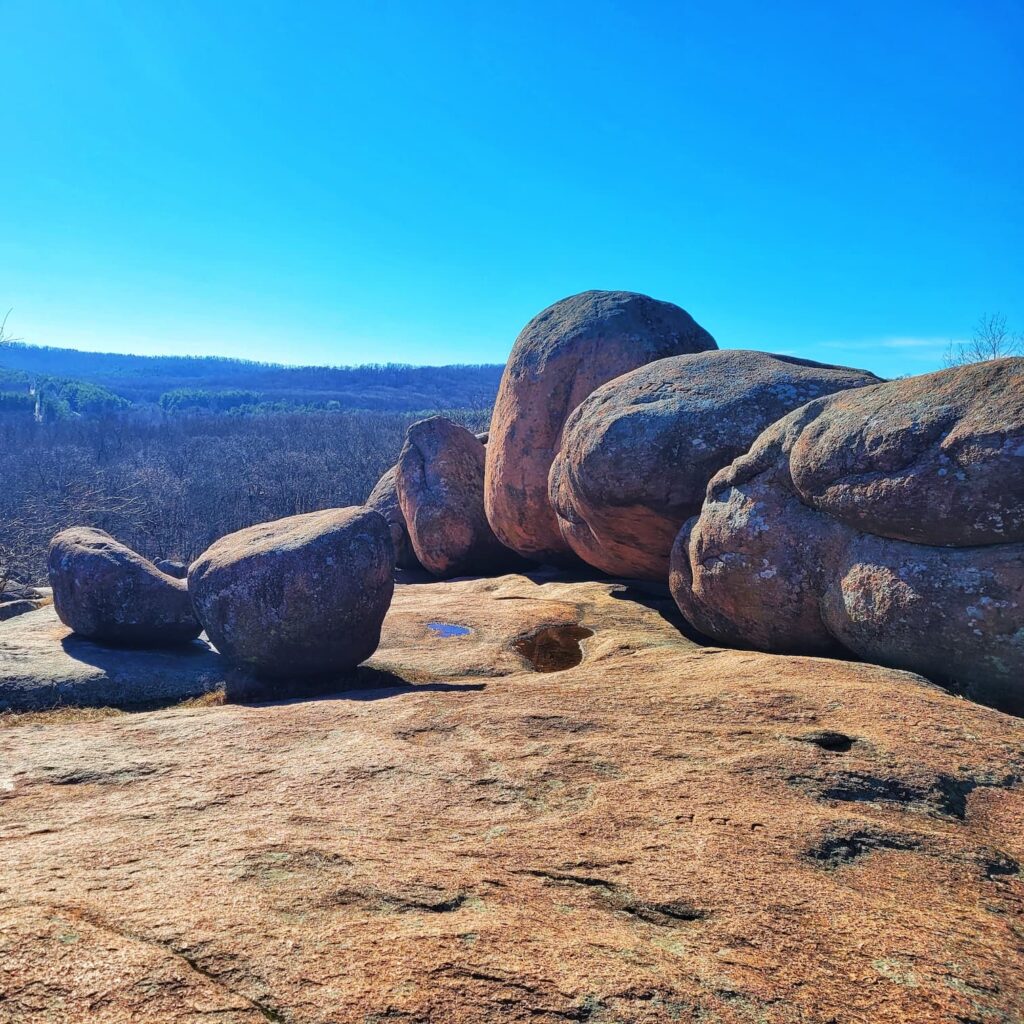
Beyond the natural beauty, the park has a strong connection to Missouri’s mining history. Just outside the park sits the oldest recorded commercial granite quarry in the state, which opened in 1860 and produced a deep red stone known as Missouri Red. A railroad once ran through what is now the park to transport the quarried granite, and if you look closely, you’ll see names and dates chiseled into the rocks—historic graffiti left behind by stonecutters and quarry workers in the 1800s. Today, Elephant Rocks is a one-of-a-kind place to explore, climb, and soak in both the natural and historic landscapes of Missouri.
Top 4 Things to Do at Elephant Rocks State Park
Hike the Braille Trail
One of the coolest features of Elephant Rocks State Park is the Braille Trail, a 0.9-mile paved loop that winds through the massive boulders and offers an up-close look at the park’s unique landscape. Designed in 1981 specifically for visitors with visual and physical disabilities, it was the first trail of its kind in Missouri state parks and has since been recognized as a National Recreation Trail. Along the path, handrails and interpretive signs with braille help guide visitors, making it a great option for anyone looking for an easy, accessible way to explore the park. Even if you don’t need the accessibility features, the Braille Trail is a fantastic way to experience the rock formations while enjoying a smooth, scenic walk.
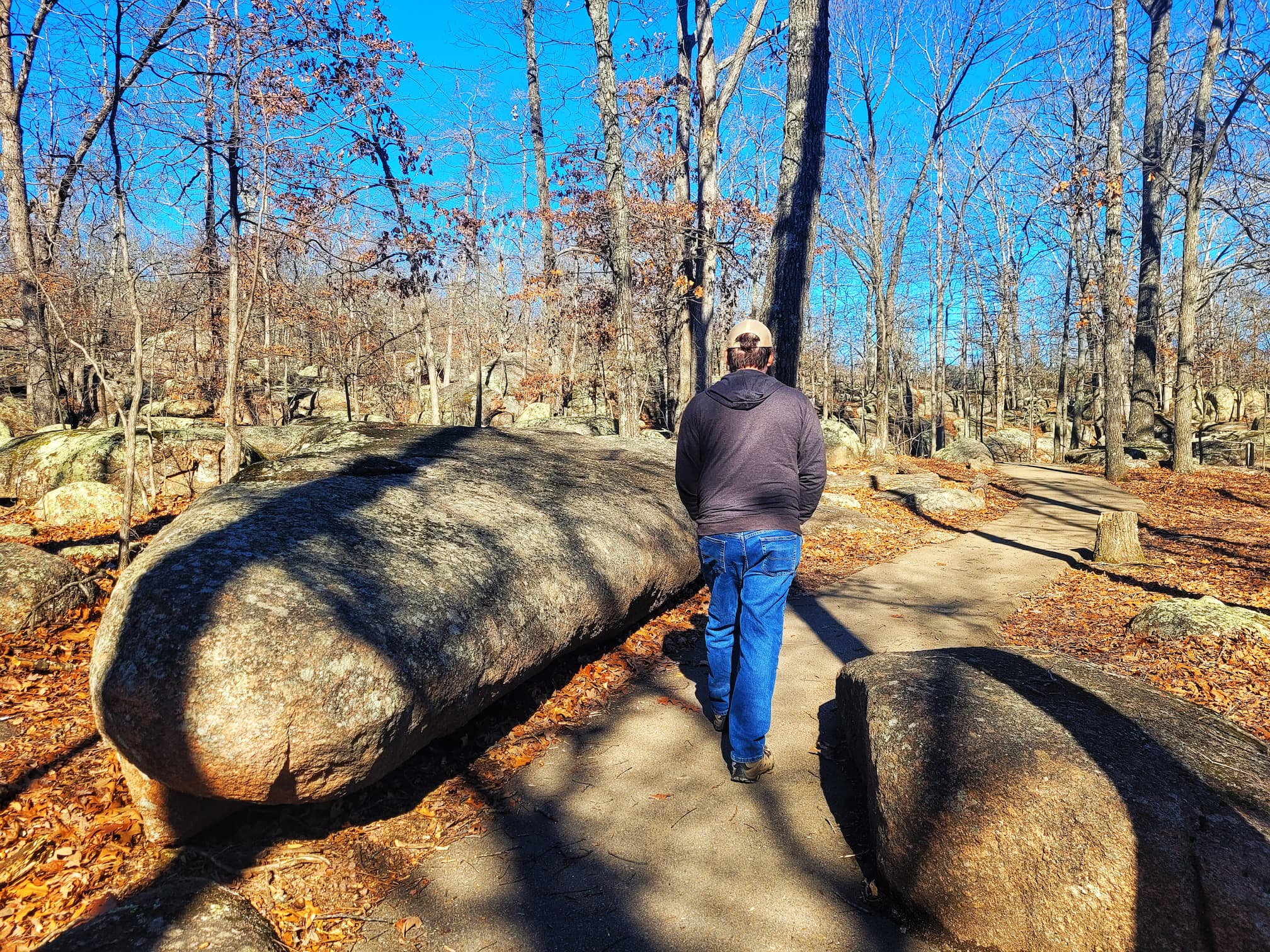
We hiked the Braille Trail one our visit to Elephant Rocks and it gave a great overview of the park and boulders. The interpretive signs are written in both braille and regular text, so it’s a great way to learn about what you’re seeing.
Climb the Boulders
One of the best things about Elephant Rocks State Park is that you’re actually allowed to climb and scramble on most of the giant boulders! Unlike some parks where climbing is restricted, here you can explore the formations up close, making it a dream spot for adventurous visitors and kids (or kids at heart!). There are no official climbing routes, but as long as you use caution and common sense, you’re free to climb the accessible rock surfaces. As long as you’re not using technical equipment and stick to under 16 feet, you don’t need a rock climbing permit.
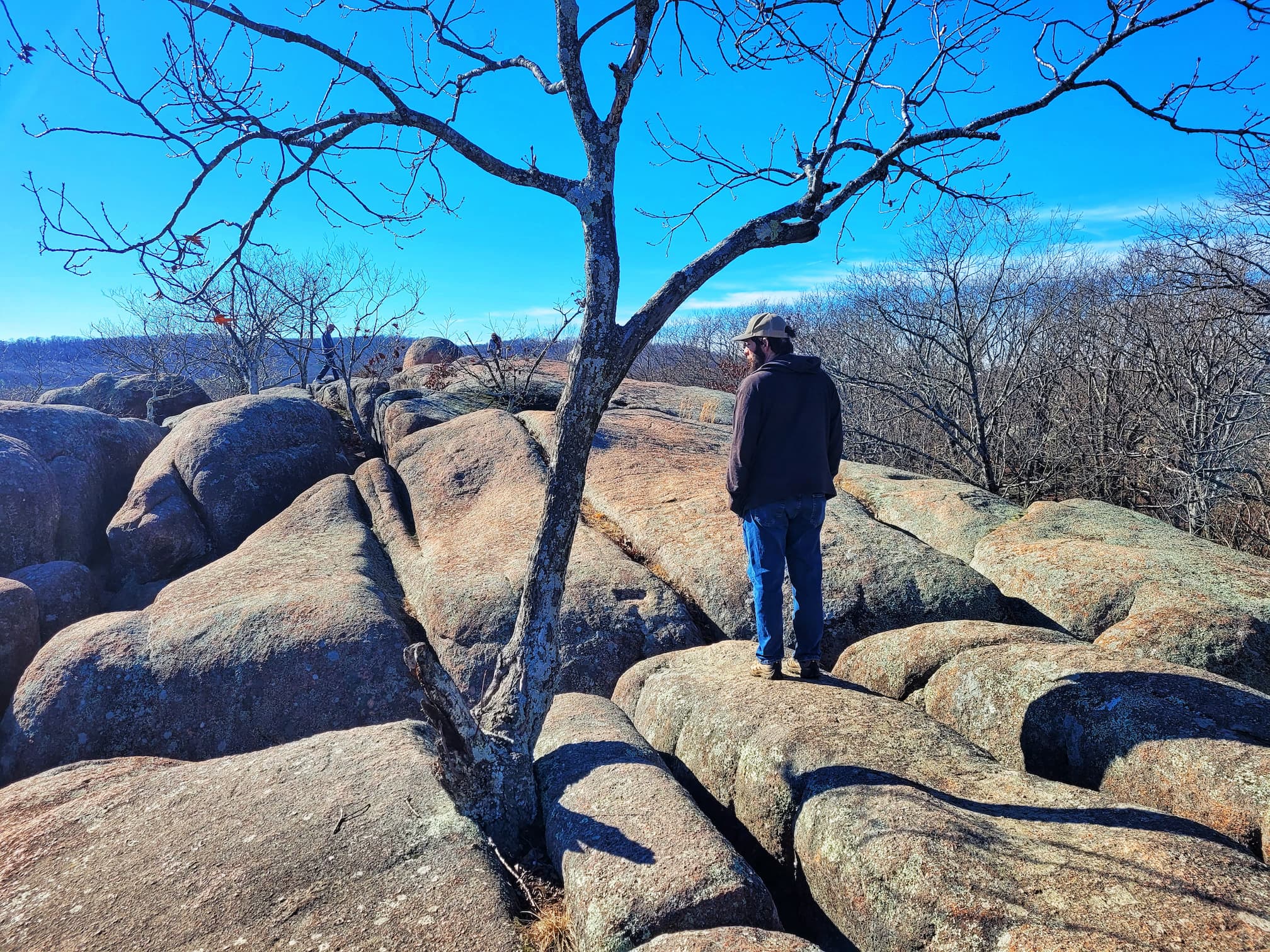
If you’re planning to climb, wear sturdy shoes with good grip, and be careful on uneven surfaces. The boulders can be slick when wet, and there are plenty of crevices and drop-offs to watch out for. Whether you’re just scrambling around or testing your bouldering skills, Elephant Rocks is an awesome place to get hands-on with Missouri’s geologic history!
Visit the Engine House Ruins
Tucked just off the Braille Trail, a short spur leads to the Engine House Ruins, a fascinating piece of Missouri’s railroad and quarrying history. This stone structure was originally built in the 1890s to repair train engines from the Iron Mountain and Southern Railroad, which played a huge role in transporting the region’s famous Missouri Red Granite. By 1902, the railroad was regularly running 16 granite cars, shipping stone from the nearby Sheehan Quarry to projects across the country.
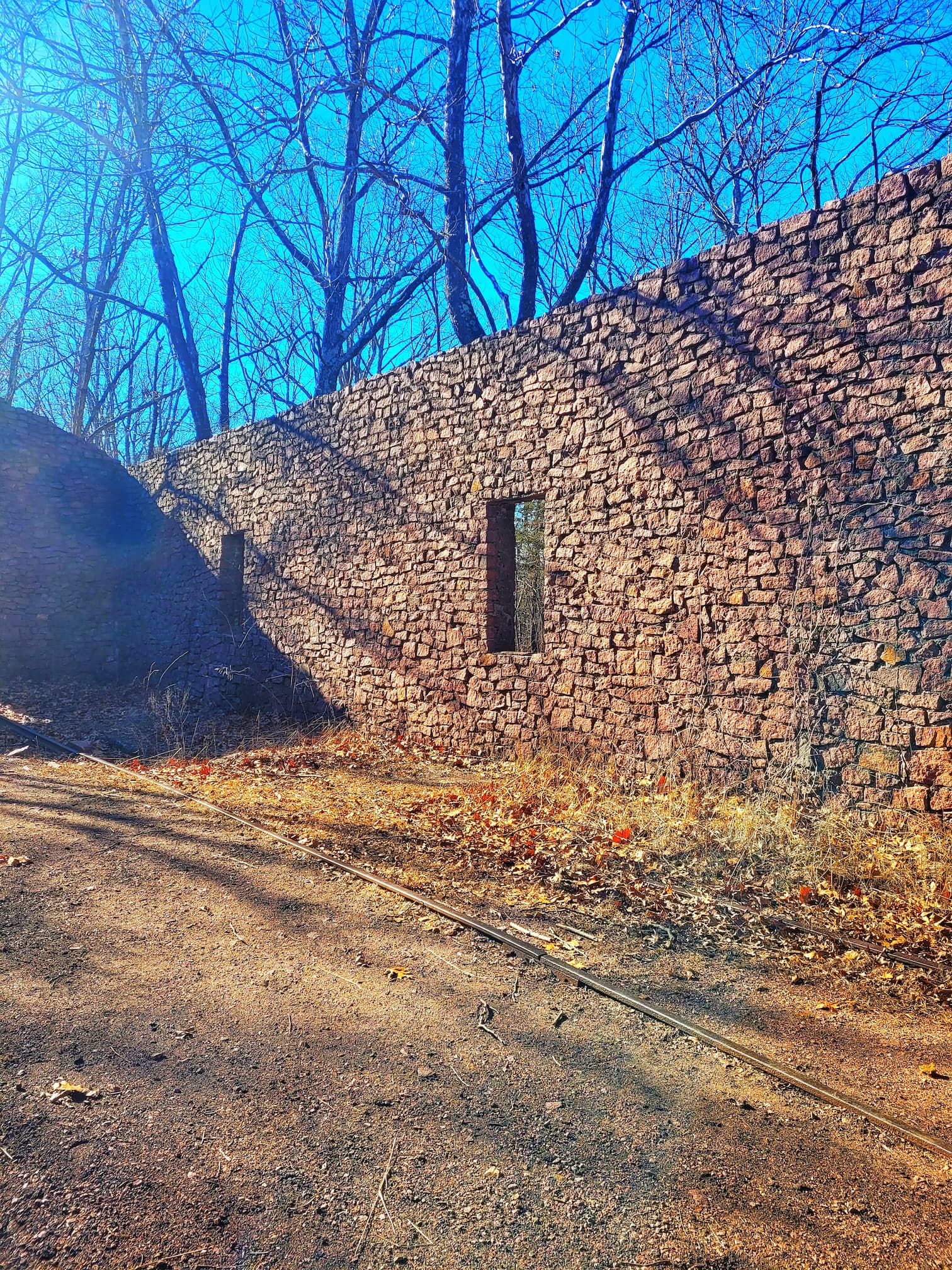
Today, the crumbling stone walls are all that remain, but it’s still a great spot to explore. The ruins sit in a peaceful wooded area, and the old stonework makes for some unique photo opportunities. If you’re interested in railroad history or industrial ruins, this is definitely a spot worth checking out while visiting the park!
Fish the Quarry Pond
While Elephant Rocks State Park is best known for its giant boulders, it also has a quiet little quarry pond where visitors can try their luck at fishing. This scenic pond, formed from an old granite quarry, isn’t actively stocked, but does have panfish like bluegill, making it a great spot for a relaxing afternoon of catch-and-release fishing.
The quarry pond is easy to access, with clear paths leading to the water’s edge. Since it’s relatively small, this isn’t a place for serious anglers, but it’s a fun option if you want to take a break from climbing and exploring. Whether you bring a fishing pole or just stop by to enjoy the peaceful water and reflections of the surrounding rocks, it’s a hidden gem within the park!
Tips for Visiting Elephant Rocks State Park
Whether you’re coming for the boulders, history, or scenic trails, here are some helpful tips to make the most of your visit to Elephant Rocks State Park.
When Should I Visit Elephant Rocks State Park?
- Spring & Fall: The most beautiful and comfortable seasons to visit! Spring brings wildflowers and mild temperatures, while fall offers stunning foliage, with the red granite boulders contrasting against the bright oranges and yellows of the trees.
- Summer: Expect hot temperatures and larger crowds, especially on weekends. The exposed granite gets hot in direct sunlight, so bring plenty of water and wear sturdy shoes to protect your feet from the heat.
- Winter: The park is open year-round, and winter visits can be peaceful with fewer crowds. A light dusting of snow on the boulders makes for magical photo opportunities, but be cautious—rock surfaces can get icy and slick.
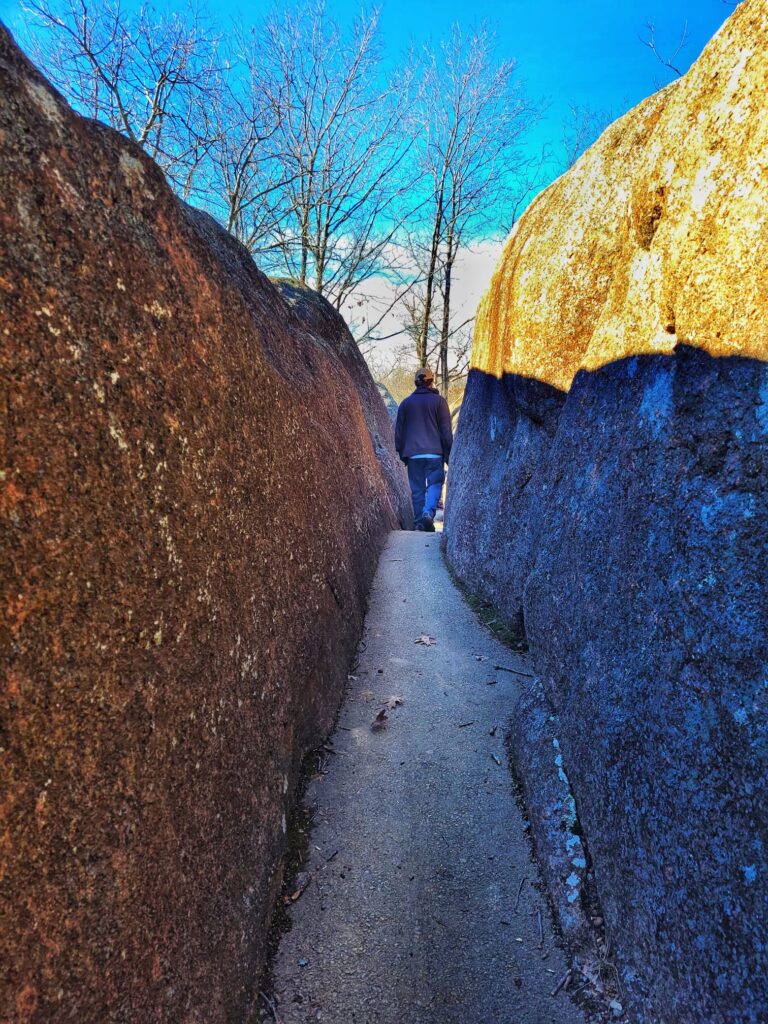
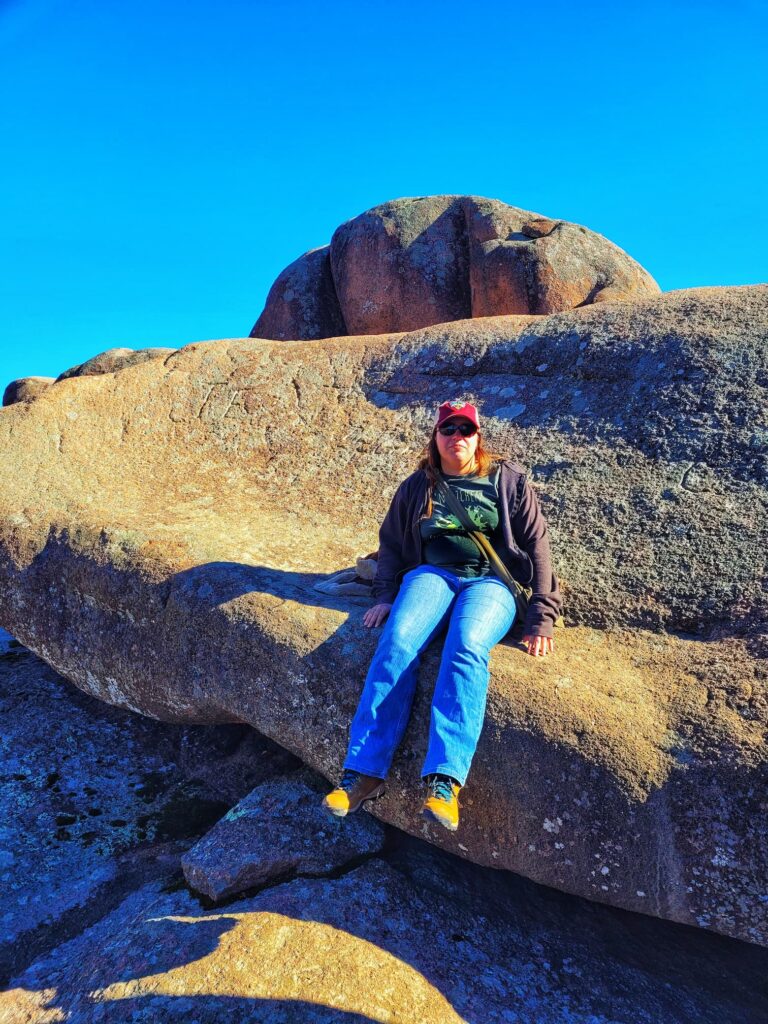
How Can I Avoid Crowds at Elephant Rocks State Park?
Visit on weekdays or in the early morning. Weekends, especially in peak seasons, can get very busy. Arriving early in the morning or visiting on a weekday will give you a much quieter experience.
Visit off-season. Late fall through early spring sees fewer visitors, making it the perfect time for a more peaceful hike and exploration.
What are the Best Photo Spots in Elephant Rocks State Park?
- Dumbo Boulder– The biggest rock in the park!
- The “Elephant Train” Formation– A classic spot where the giant boulders line up like circus elephants.
- Historic Graffiti Rocks– Look closely at the chiseled names from 19th-century quarry workers.
- Engine House Ruins– A great mix of nature and history for unique shots.
- Quarry Pond Reflections – The still water makes for some stunning mirror-like photos of the surrounding rocks and trees.
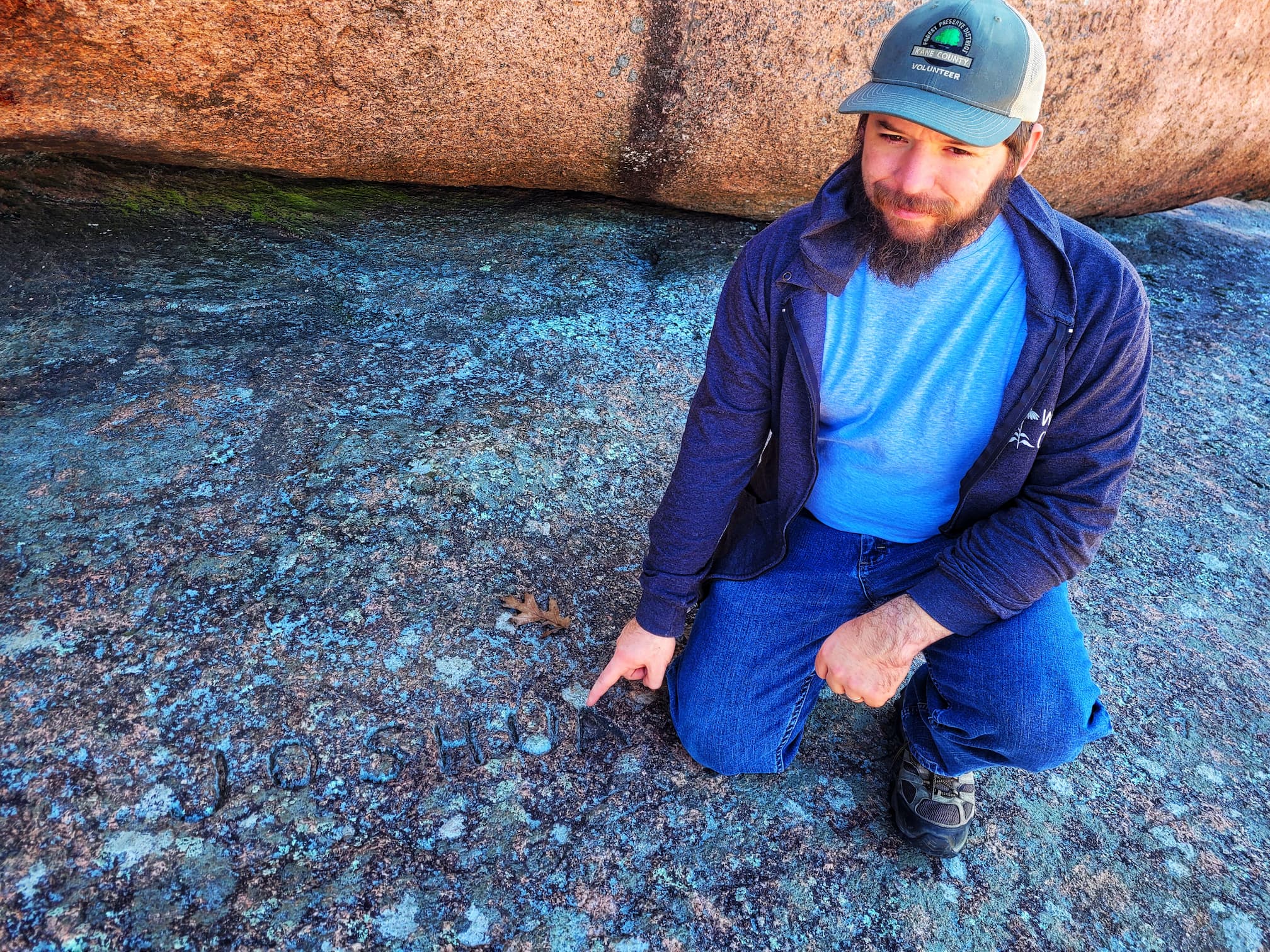
How Accessible is Elephant Rocks State Park?
Elephant Rocks State Park is one of the most accessible state parks in Missouri, making it a great destination for visitors of all abilities. The park’s Braille Trail was the first designed specifically for people with visual and physical disabilities in Missouri state parks, and its paved 0.9-mile loop provides a smooth, easy way to experience the stunning rock formations up close.
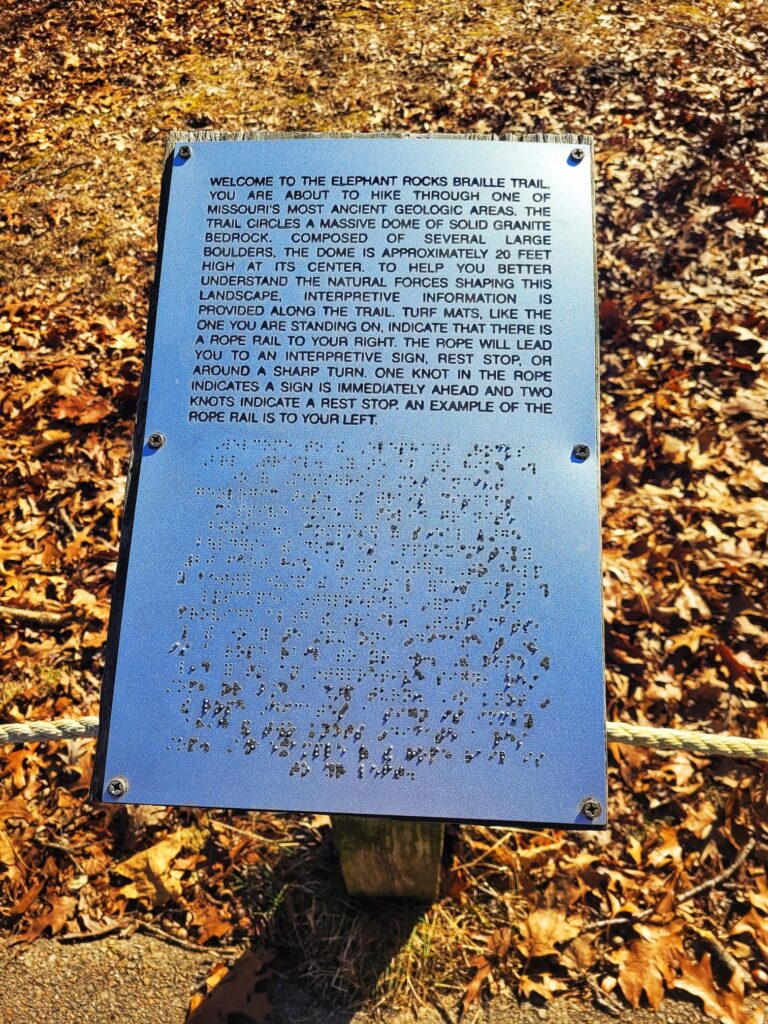
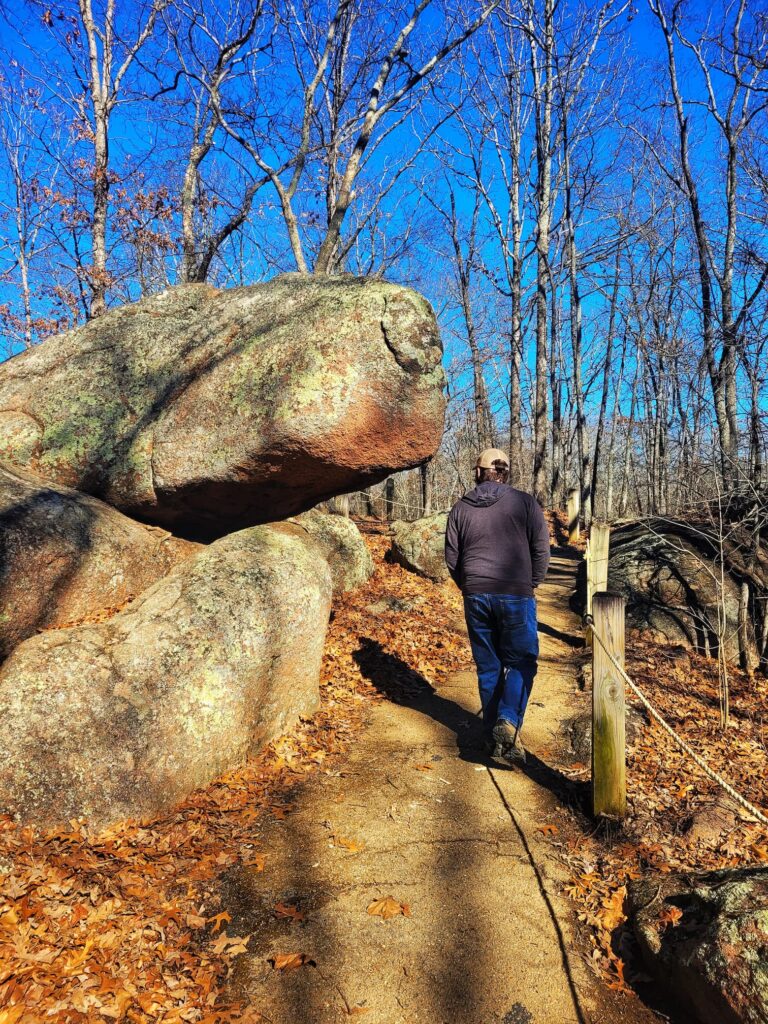
For visitors with mobility challenges, the park also offers a track chair, an electric off-road wheelchair designed to handle rugged terrain. This chair is free to use but must be reserved at least two days in advance. It’s available to anyone with a mobility need, though anyone under 18 must have a legal guardian present. If a visitor needs assistance transferring into the chair, they must bring their own helper, as park staff are unable to assist.
The track chair is available Fridays through Sundays from June to October, with a maximum use time of two hours per session due to battery limitations. To reserve, call the park office at least 48 hours ahead, and on the day of your visit, you’ll meet with staff at the Braille Trail for an orientation. This is an awesome option for those who want to explore beyond the paved paths and fully experience the beauty of the park!
Is There a Fee to Visit Elephant Rocks State Park?
No! Parking and entrance to Elephant Rocks is free.
Why Elephant Rocks State Park Belongs on Your Missouri Bucket List
Elephant Rocks State Park is truly a one-of-a-kind destination in Missouri. Whether you’re here to climb the giant boulders, explore the historic quarry, hike the scenic trails, or capture stunning photos, there’s something for everyone to enjoy. With its unique geology, rich history, and accessibility-friendly trails, this park is an easy and rewarding stop for outdoor lovers of all ages.
If you’re planning a day trip in the Missouri Ozarks, Elephant Rocks pairs perfectly with nearby sites like Taum Sauk Mountain, Johnson’s Shut-Ins, and Missouri Mines Historic Site—just like we did! No matter when you visit, this billion-year-old landscape is sure to impress.
So grab your hiking shoes, charge your camera, and get ready for an adventure among Missouri’s most unusual rock formations. Have you visited Elephant Rocks State Park? Share your favorite spots and tips in the comments!




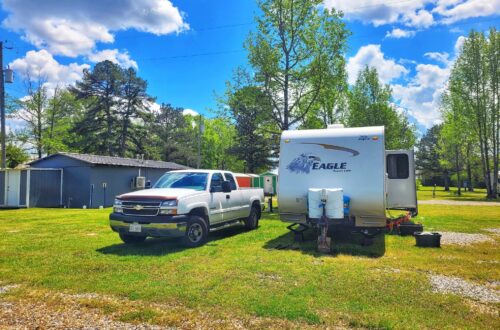
One comment on “Climbing Giants: How to Make the Most of Your Visit to Elephant Rocks”
Comments are closed.